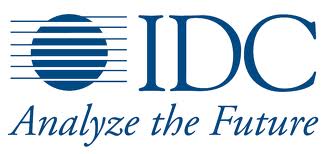 Manila, 10 July 2014 –The recovered Philippines economy, coupled with the fast increasing bandwidth demand of both business and consumers, provided for a steadily growing telecommunications market in 2013.
Manila, 10 July 2014 –The recovered Philippines economy, coupled with the fast increasing bandwidth demand of both business and consumers, provided for a steadily growing telecommunications market in 2013.
Revenue from this sector amounted to US$5,012 million in 2013, an increase of 2% from the previous year.
The importance and potential of the Asia/Pacific market has been re-evaluated in recent years and quite a number of MNCs have come to develop or further expand markets across the region, including the Philippines. This has been driving the telecom service demand especially the international traffic.
With fast-growing bandwidth demand and increasing price pressure, usage is expected to increase fast while ARPUs of most services across fixed line and mobile will be on a slow decline. Over-The-Top (OTT) applications are cannibalizing the revenue of some core traditional telecom services such as messaging and voice calls. Overall forecasts remain optimistic, albeit conservative, at a CAGR of 4%.
“The growth momentum in the next five years will largely come from mobile services, driven by mobile broadband, mobile Value Added Services (VAS), and customized mobile applications. Mobile operators are heavily focus on mobile broadband strategy as they have rolled out full coverage of 3G services and starting to roll out 4G network across the archipelago,” says Ashadi Cahyadi, senior research manager, IDC Asia Pacific.
“IDC expects positive revenue growth, however, the main challenge is how the mobile broadband strategy can support customer retention and loyalty program in a market of predominantly prepaid mobile users,” Cahyadi adds.
“When it comes to fixed line telecom services, the next five years will be defined by bandwidth upgrade, service improvement, migration from standalone basic communications, or connectivity offerings toward managed solutions and bundled packages for fixed line telecom services,” says Sherrie Huang, research manager, IDC Asia/Pacific.
“IDC recomemends that the telecom service provider (SP) community reviews their offerings portfolio and examine the ROI of the services especially those basic, legacy, or standalone services. SPs need to strengthen their managed and professional services capabilities, and come up with innovative solutions and integrated/bundled packages/offerings to remain competitive, rather than continue selling the same portfolio with standalone communications and connectivity services. SPs have to closely monitor market trends and technology evolution to ensure they remain on the right track,” says Huang.
About IDC
IDC is the premier global provider of market intelligence, advisory services, and events for the information technology, telecommunications, and consumer technology markets. IDC helps IT professionals, business executives, and the investment community make fact-based decisions on technology purchases and business strategy. More than 1,100 IDC analysts provide global, regional, and local expertise on technology and industry opportunities and trends in over 110 countries. For more than 50 years, IDC has provided strategic insights to help our clients achieve their key business objectives. IDC is a subsidiary of IDG, the world’s leading technology media, research, and events company. You can learn more about IDC by visiting www.idc.com
